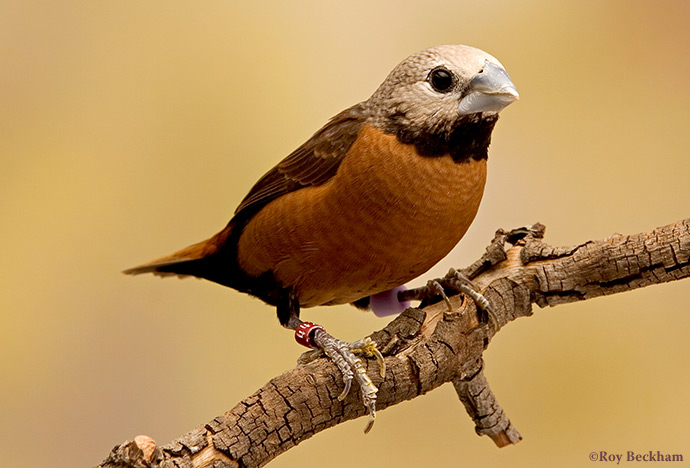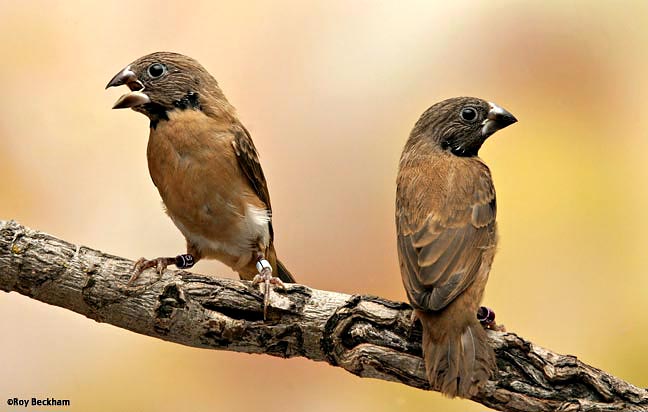




 |
|
|||||||||||||||||||||
 |
|
|
|
|
|
|
|
|
|
|||||||||||||
|
|
|
|
|
|
||||||||||||||||||
|
|
|
|
|
|
|
|
|
|
||||||||||||||
|
|
|
|
|
|
||||||||||||||||||
|
|
|
|
|
|
|
|
|
|
||||||||||||||
|
|
|
|
|
|
||||||||||||||||||
|
|
|
|
|
|
|
 |
|
|||||||||||||||
 |
 |
|
||||||||||||||||||||
|
|
|
|
||||||||||||||||||||
|
|
|
|
|
|
|
|
|
|
|
|
|
|
|
|
|
|
|
|
|
|
|
|
| Gray Crown Mannikin - Lonchura nervermani | |||||
 |
|||||
| Gray Crown Mannikin | |||||
|
Common Names Description Diet Breeder's Notes Once I identify a pair I always separate them into individual breeding cages rather than attempt to breed them in a colony. It has been my experience with Munia of this type that a dominant pair will form and the other birds will not form pairs or attempt to breed. Once this pair is set up on their own, other pairs will begin to form and can be identified and can be set up as well. I have provided half-open nest boxes as well as milk cartons with large openings cut into them. They don't seem to like the boxes with hole openings or dark boxes. A lot of light in the nest seems to be preferred. Wicker baskets would surely be readily accepted, but I don't like to use those and especially not with Munia that grow long toenails that can get caught in the weaving. I provide coconut fiber only as most other materials are ignored. They will take some stiff straw like material if provided, but generally don't use soft materials like burlap or feathers to line the nest. A dome nest will be built in the box and is often completed rather quickly. They will also construct roosting nests in addition to nests used for breeding. No nest construction at all might indicate either a same sex pair has been selected or that the pair is incompatible. A clutch of 4-7 eggs will usually be laid within a few weeks of the completion of the nest, if the pair is in condition. The pair will take turns incubating and both birds will return to the nest at night. Incubation is about 13 days before the pink and naked chicks hatch. The young will fledge in approximately 20-21 days. The fledglings are a light brown in the breast and belly with darker brown wings and look like so many of the other Asian munia fledglings. The face and head is usually darker than a Spice fledgling and similar to what would be seen in a Chestnut Breasted Mannikin fledgling, but this often gives way to the silvery gray crown that will come later. The young are weaned in about 14 days after fledging, but I will usually leave them for a full 3-4 weeks after fledging before removing them from the breeding cage. The parents are not at all aggressive with the young, but if they are starting a new clutch the eggs will often be trampled and soiled from the young who will return to the nest with the parents at night to roost. It usually takes several months for the young to molt into adult colors. Typical of Asian lonchura, the Gray Crowns can be successfully fostered to not only Societies, but to other Asian munia like Tri-color munia, Spice finches or Chestnut Breasted mannikins. They are such steady breeders that fostering is rarely necessary and they can even be relied upon to foster other species if needed. Additional Notes I have noted a tendency towards some level of melanism in the lower abdomen area of some birds, especially males. This appears as a black extension of the rump color, and extends up the middle of the breast. Not common, but a few individuals, usually males, with great depth in their color seem to have this marking. Like many of the Asian Lonchura family, the Gray Crown suffers from long toenails. This is probably great in the wild if you're hanging vertically from a reed, but can be dangerous in a cage. Keep a close eye on this and trim when necessary. Feather plucking is rarely a problem in mannikins, especially the Asian mannikins, but the Gray Crowns, like Chestnut Breasted mannikins, can get aggressive and pluck tails and the backs of necks. Crowding seems to trigger this. I have noted one unusual marking in a bird that was inherited by one of its offspring. A pied-like marking between the legs was first seen in an imported hen. It was inherited by one of its male offspring seen below. |

Gray Crown Mannikin fledglings. One shows some unusual white markings between the legs
See the mouth markings of nestling Gray Crown Mannikins
